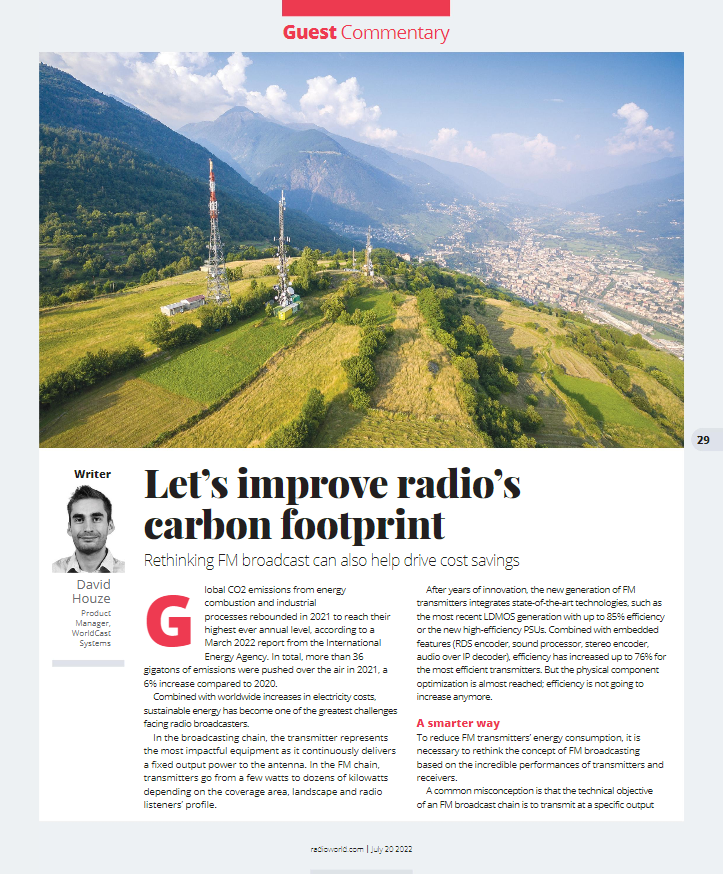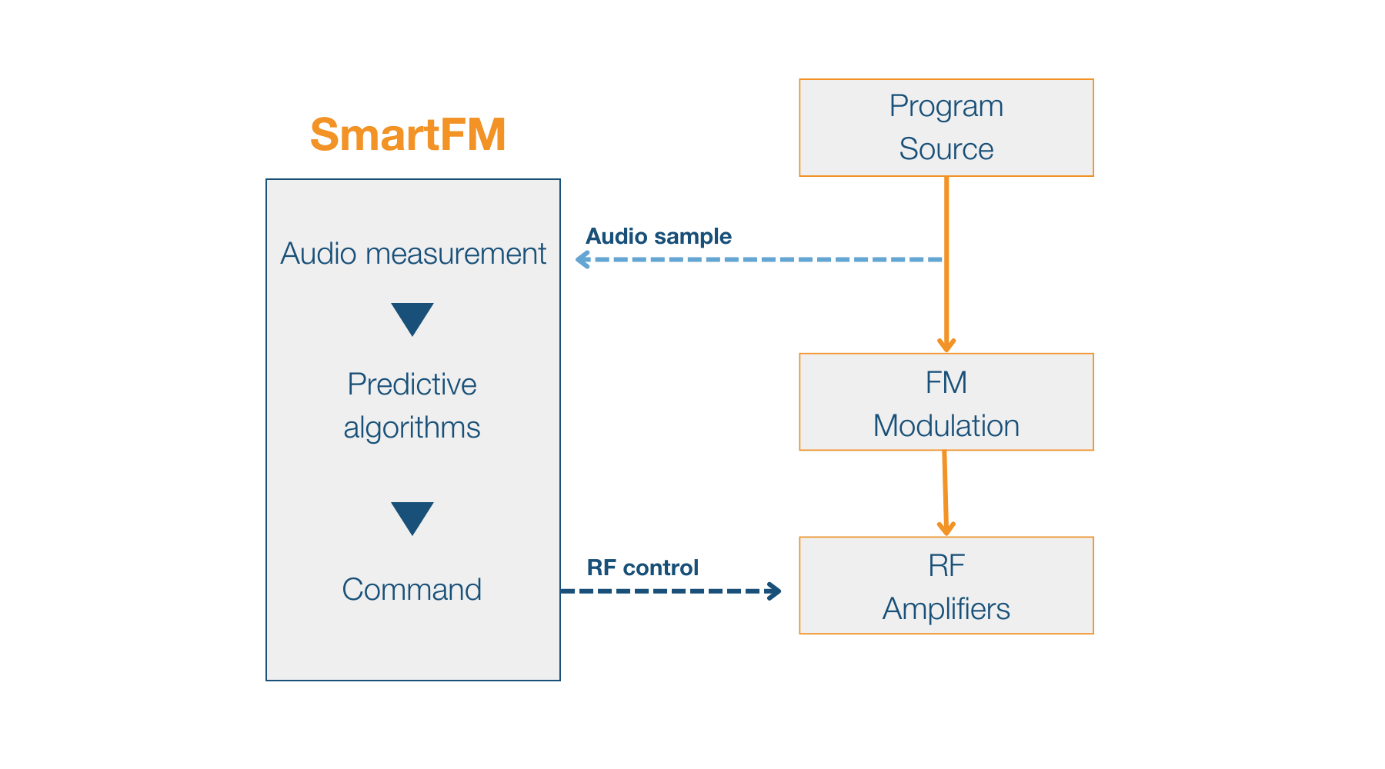WorldCast developed its SmartFM algorithm based on this concept. A psychoanalysis algorithm qualifies the robustness of audio content to perturbations. Then, when the signal is robust enough, the artificial intelligence adjusts the transmitter power accordingly.
This results in up to 40% electricity savings while maintaining listeners’ comfort and service area.
Another major impact of SmartFM is to reduce the average heat dissipation of the transmitter itself. Consequently, the cooling system’s electricity consumption is reduced proportionally to the heat reduction.
For example, the efficiency of a 10kW FM transmitter on the market is about 74%, which means that the direct electrical consumption is approximately 13kWh, 24/7. Total electricity consumption to feed one 10kW FM transmitter during one year is then estimated at 120MWh. With SmartFM, total consumption for the exact same system drops by 10% to 40%—a maximum reduction of 50MWh per year for a 10kW FM transmitter.
To help radio broadcasters reduce the electricity consumption of their FM transmission network and improve their carbon footprint, the industry must rethink the whole concept of radio broadcasting and continue to find new ways to innovate.



